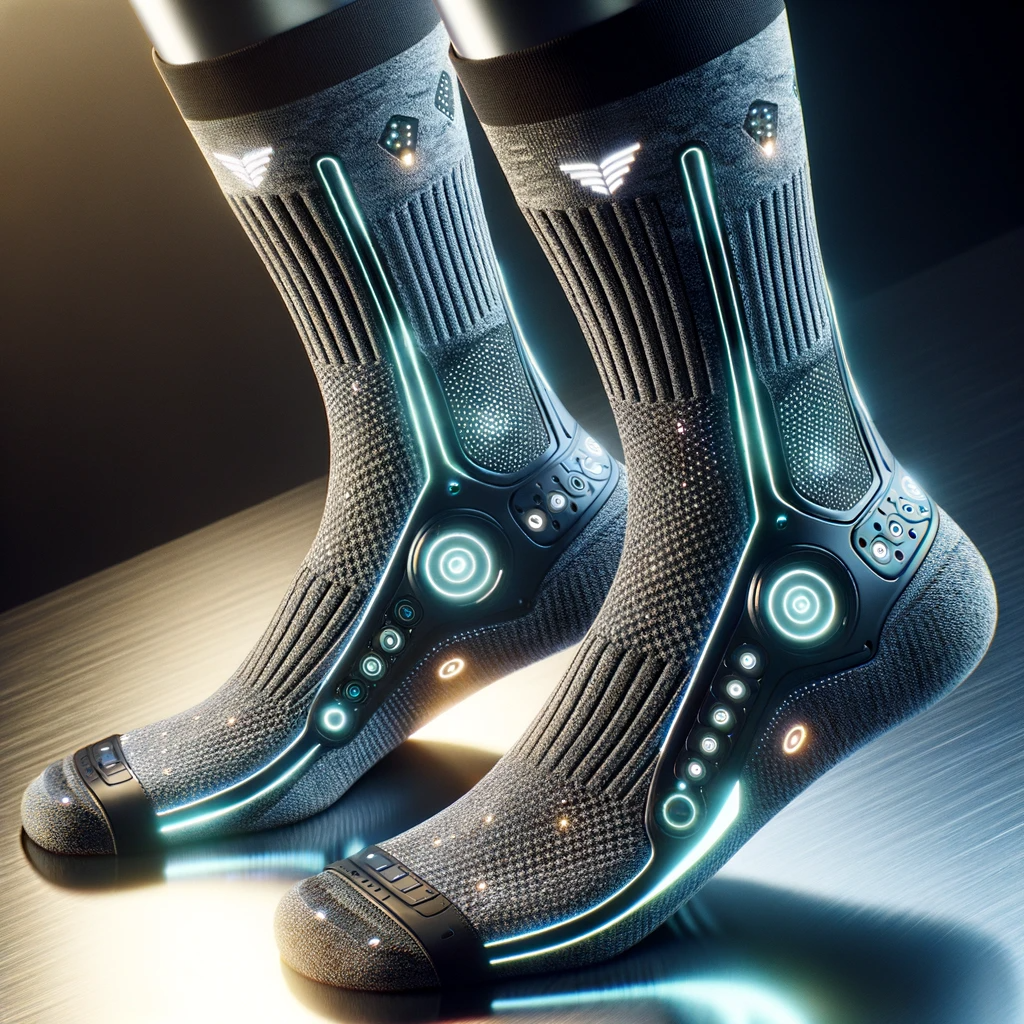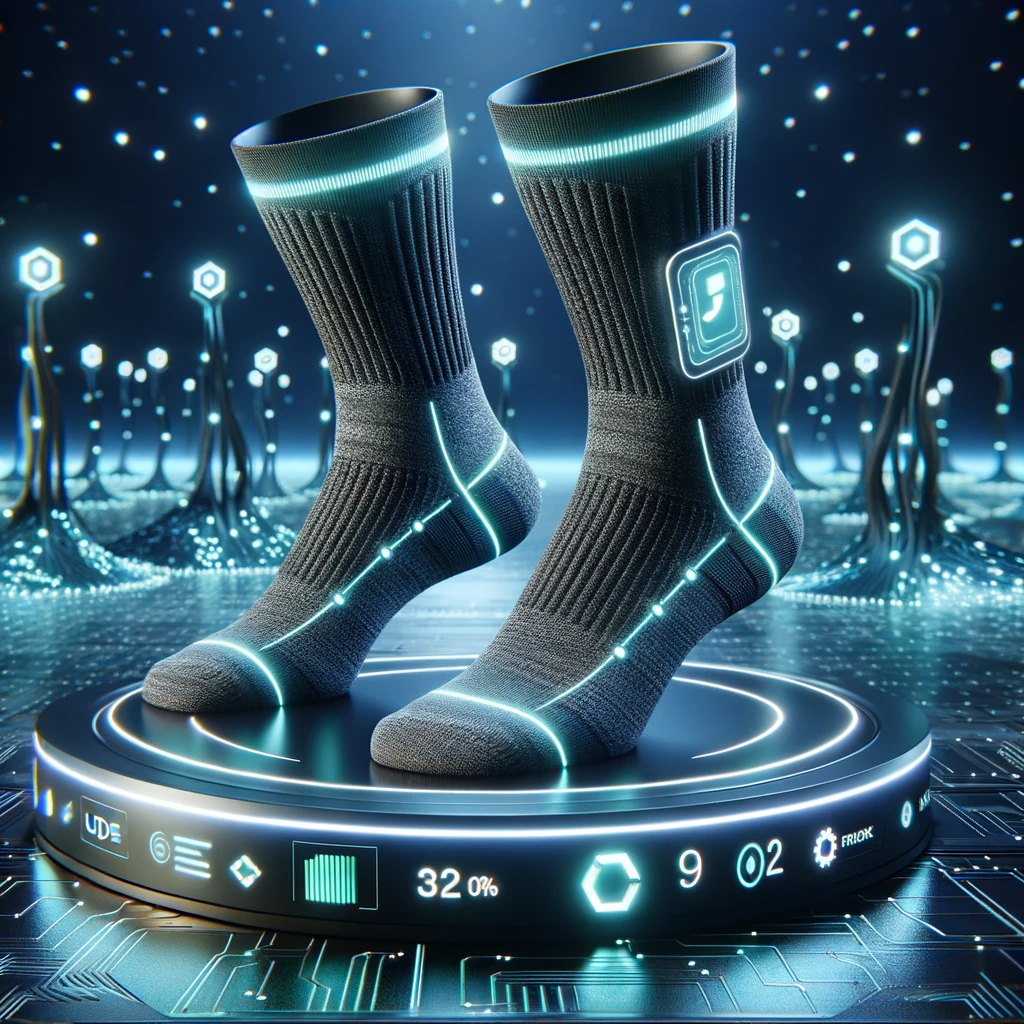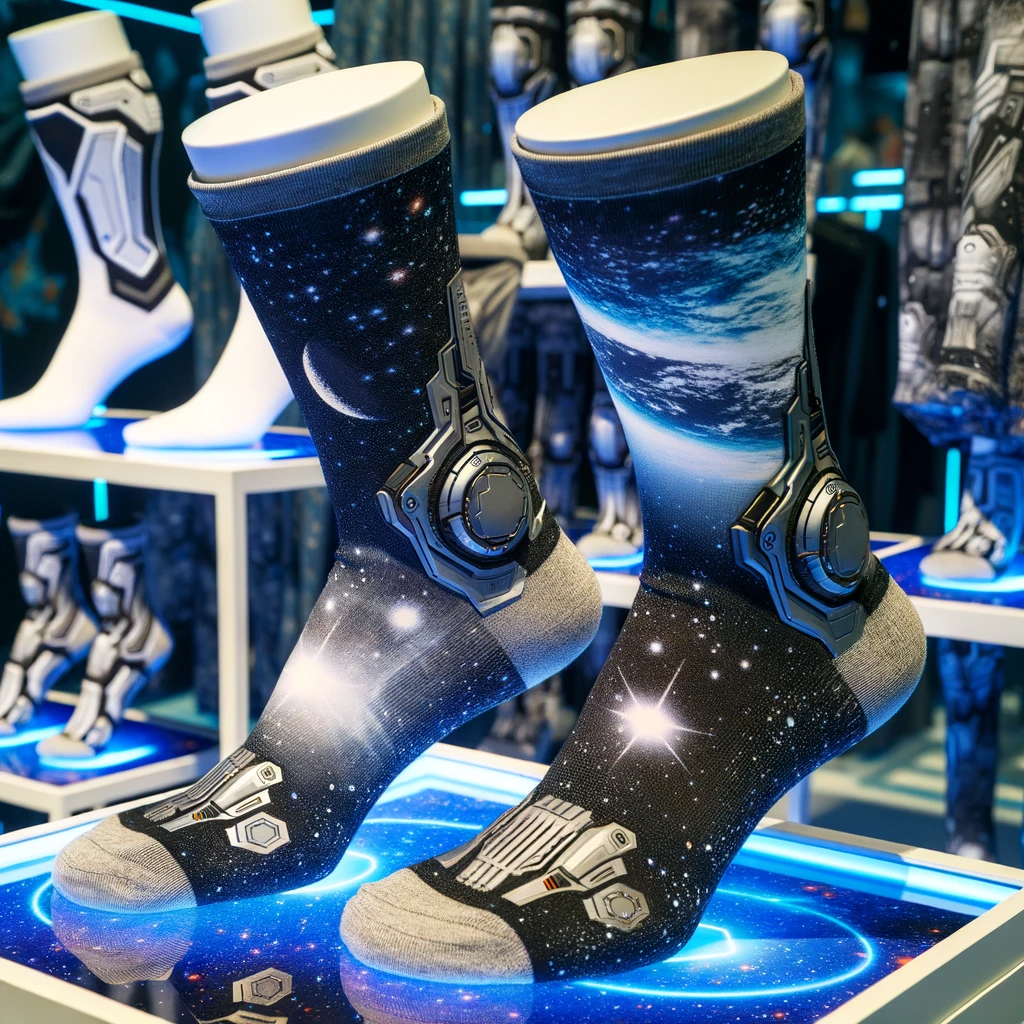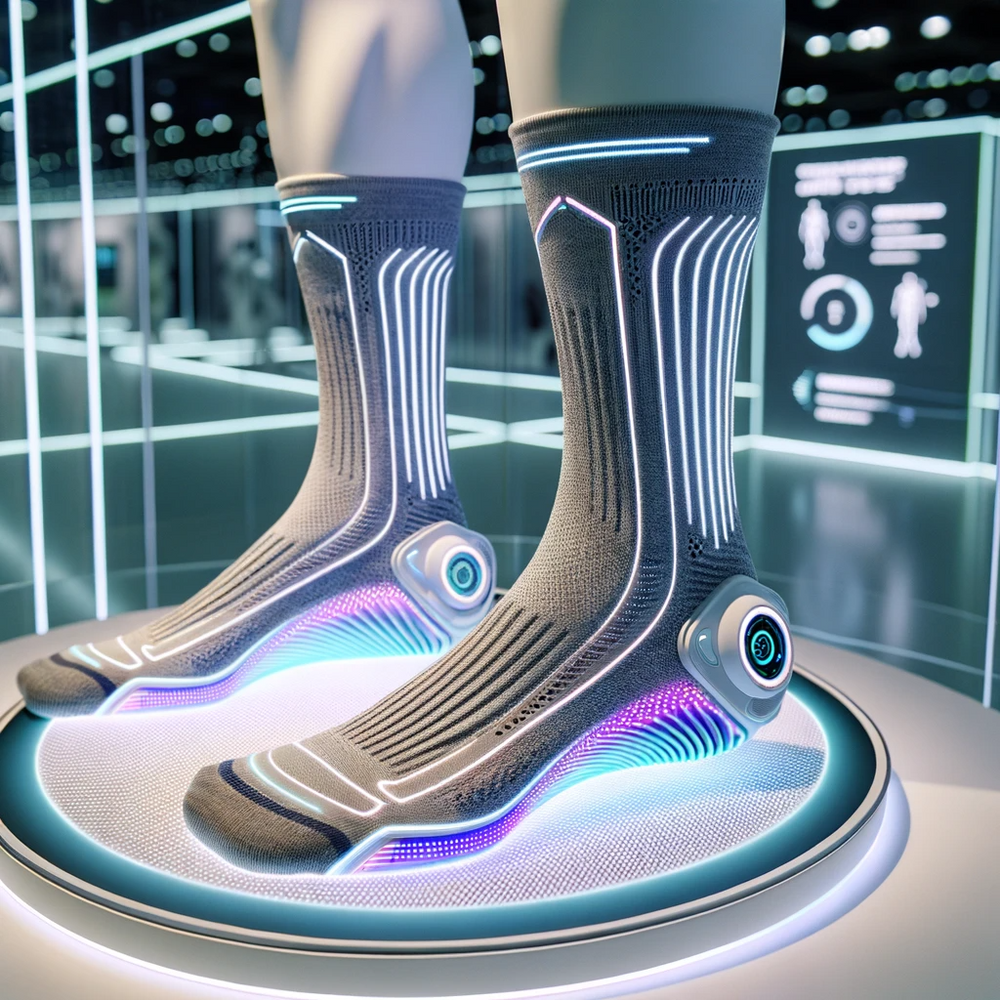The Future of Socks: Smart Socks and Beyond
Socks, the humble foot coverings that we often take for granted, have come a long way since their inception. They have evolved from basic footwear to fashion statements, and now, with advancements in technology, they are transforming into something even more remarkable – smart socks. These innovative garments are changing the way we think about socks and offering a glimpse into the future of wearable technology.
Understanding Smart Socks
Smart socks may sound like something out of a science fiction movie, but they are very much a reality. At their core, smart socks are designed to provide functionality beyond what traditional socks offer. They are embedded with sensors and electronic components that allow them to perform a range of functions, from health and fitness tracking to providing enhanced comfort and convenience.
The Concept of Smart Socks
The concept behind smart socks is to combine the comfort and utility of regular socks with the power of technology. By integrating sensors into the fabric, these socks can collect data about various aspects of your body, such as your heart rate, temperature, and even the way you walk. This data can then be analyzed to provide valuable insights into your overall health and wellness.
Imagine slipping on a pair of smart socks and instantly having access to a wealth of information about your body. With each step you take, the sensors embedded in the fabric capture data about your foot strike pattern, gait, and balance. This information can help you identify any potential issues with your walking or running technique, allowing you to make adjustments and reduce the risk of injury.
Not only do smart socks provide valuable data about your physical health, but they can also offer insights into your sleep patterns. By wearing these socks overnight, the sensors can monitor your sleep quality, including the duration of each sleep cycle and any disruptions throughout the night. This information can help you optimize your sleep routine and improve your overall well-being.
The Technology Behind Smart Socks

Smart socks utilize a combination of cutting-edge technologies to deliver their impressive functionality. Thin, flexible sensors are woven into the fabric of the socks, allowing them to seamlessly and comfortably gather data. This data is then transmitted to a small module or device, usually located near the ankle or calf, which can connect to your smartphone or other devices through Bluetooth or Wi-Fi.
But how do these sensors actually work? The sensors in smart socks are typically made of conductive materials, such as silver or carbon, that can detect changes in electrical conductivity. When you wear the socks, these sensors come into contact with your skin and can measure various physiological signals, such as the electrical activity of your muscles or the moisture level of your feet.
Additionally, some smart socks come equipped with built-in microcontrollers and data storage capabilities, allowing them to operate independently without the need for a separate device. This ensures that you can track your progress and receive real-time feedback even when you are not carrying your smartphone with you.
With the advancement of technology, smart socks are becoming more sophisticated. Some models now feature haptic feedback, which means they can provide gentle vibrations or pressure to specific areas of your feet to improve circulation or relieve pain. Others even have temperature control capabilities, allowing you to adjust the warmth or coolness of your feet with a simple tap on your smartphone.
As the demand for smart socks continues to grow, researchers and developers are exploring new possibilities. They are experimenting with integrating additional sensors, such as GPS or pressure sensors, to provide even more accurate data and insights. The future of smart socks holds great potential for revolutionizing the way we take care of our feet and monitor our overall health.
The Evolution of Socks

Socks have come a long way since their inception as mere foot coverings. In ancient times, socks were primarily worn for warmth and protection. However, as civilizations progressed, socks began to evolve, becoming not just a practical garment, but also a fashion statement.
Ancient civilizations recognized the importance of keeping their feet warm and protected from the elements. In colder regions, people would fashion socks out of animal skins or woven grasses, providing a layer of insulation against the cold ground. These early socks were simple in design, serving their purpose of keeping feet cozy and shielded from the harsh environment.
As societies developed and craftsmanship advanced, socks started to take on a new role as a status symbol. In the 8th century, socks began to be adorned with intricate patterns and designs, signifying wealth and prestige. The nobility would commission skilled artisans to create socks made from luxurious materials such as silk and adorned with delicate lace. These socks were not only functional but also a display of one's social standing.
Throughout history, socks continued to be a symbol of fashion and personal style. In the Victorian era, lace stockings became a staple of high society fashion. Women would spend hours meticulously choosing the perfect pair to match their dresses, with lace patterns becoming increasingly intricate and elaborate. Men, too, embraced fashionable socks, opting for bold colors and patterns to add a touch of personality to their attire.
From Basic Footwear to Fashion Statement
As the world entered the modern era, socks became more accessible to people of all walks of life. Mass production techniques allowed for a wider variety of socks to be produced at affordable prices. This democratization of socks led to a revolution in sock fashion, with individuals using socks as a means of self-expression.
In the 1960s and 1970s, socks became a canvas for bold and vibrant designs. Psychedelic patterns, geometric shapes, and tie-dye prints adorned the feet of the counterculture movement, reflecting the spirit of rebellion and individuality. Socks became a statement piece, worn proudly to showcase one's unique style and personality.
In recent years, the fashion industry has embraced socks as a key accessory, with designers incorporating them into their runway shows and collections. From high-end fashion houses to streetwear brands, socks have become an integral part of the overall look. Bold patterns, playful prints, and unexpected materials have transformed socks into a fashion statement that can elevate any outfit.
The Rise of Functional Socks
In addition to their fashion-forward evolution, socks have also seen advancements in functionality. In recent years, the demand for socks that do more than just look good has been on the rise. Functional socks, designed to provide additional benefits such as moisture-wicking, cushioning, and arch support, have gained popularity among athletes and individuals seeking enhanced comfort and performance.
These specialized socks are engineered using advanced fabrics and construction techniques. Moisture-wicking socks, for example, are made from materials that draw sweat away from the skin, keeping feet dry and preventing blisters. Cushioned socks feature extra padding in key areas to provide added comfort and reduce impact during physical activities. Arch support socks are designed to provide stability and reduce strain on the feet, making them ideal for individuals with flat feet or high arches.
Functional socks have revolutionized the way people approach foot health and comfort. Athletes rely on these socks to enhance their performance and prevent injuries, while individuals with specific foot conditions find relief and support in specialized sock designs. The marriage of fashion and functionality has given rise to a new era of socks, where style and practicality coexist harmoniously.
Benefits of Smart Socks
The integration of technology into socks offers a host of benefits that go beyond what traditional socks can provide. Whether you are an athlete looking to improve your performance or simply someone who values comfort and convenience, smart socks have something to offer.
Health and Fitness Tracking
One of the key benefits of smart socks is their ability to track various health and fitness metrics. By monitoring your heart rate, temperature, and even the pressure exerted on different parts of your feet, these socks can provide valuable insights into your overall well-being. This data can help you identify potential issues, track your progress, and make informed decisions about your health and fitness goals.
Comfort and Convenience
Smart socks are not only functional; they also prioritize comfort. The integration of sensors and electronic components is done in a way that does not compromise the overall feel and fit of the socks. Additionally, many smart socks come with features such as moisture-wicking properties, cushioning, and arch support, ensuring maximum comfort throughout the day.
Challenges and Controversies
While smart socks offer exciting capabilities, they are not without their challenges and controversies. As with any technology that collects personal data, privacy concerns are a prominent issue. The data collected by smart socks is highly personal and sensitive, raising questions about who has access to this information and how it is used.
Privacy Concerns
The collection of health and fitness data by smart socks opens up a whole new realm of privacy concerns. Users must trust that their data will be handled responsibly and securely. It is crucial for smart sock manufacturers to prioritize user privacy and provide transparent policies on data collection and usage.
Cost and Accessibility
As with any emerging technology, the cost of smart socks can be a barrier to adoption for some individuals. The integration of sensors and electronics into the fabric of the socks adds to their manufacturing cost, making them more expensive than traditional socks. Additionally, the accessibility of smart socks may be limited, particularly in areas with slower technology adoption or for individuals with limited financial resources.
Future Trends in Sock Technology

The future of smart socks looks promising, with continual advancements in technology and growing consumer interest. As we look ahead, several trends are shaping the future of sock technology.
Predictions for the Next Generation of Smart Socks
Experts predict that the next generation of smart socks will be even more advanced and capable. We can expect to see improvements in sensor technology, allowing for more accurate and comprehensive data collection. Additionally, advancements in machine learning and artificial intelligence (AI) will enable smarter algorithms that can analyze the collected data and provide personalized recommendations for optimizing health and performance.
The Impact of AI and IoT on Sock Innovation
The integration of artificial intelligence and the Internet of Things (IoT) will play a pivotal role in the future of smart socks and wearable technology as a whole. AI-powered algorithms will enable socks to learn from user behavior and adapt to individual preferences. The IoT connectivity will allow smart socks to seamlessly integrate with other devices and platforms, creating a truly interconnected ecosystem that enhances the overall user experience.
Smart socks are redefining the concept of functional and wearable technology. With their ability to collect valuable health and fitness data, enhance comfort, and offer unique features, smart socks are paving the way for a future where our clothing becomes an extension of ourselves. While there are challenges to overcome, such as privacy concerns and accessibility, the potential benefits of smart socks make them an exciting development in the world of fashion and technology. As technology continues to advance, we can only imagine the incredible innovations that lie ahead in the future of socks and beyond.

